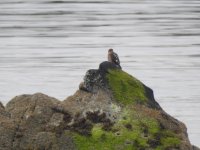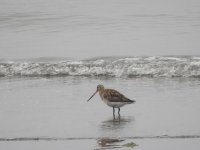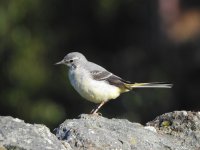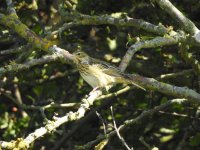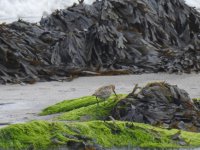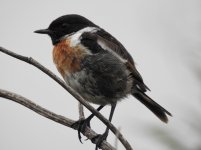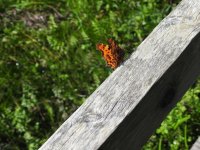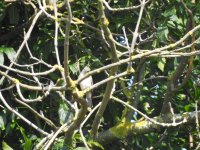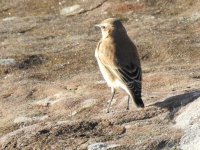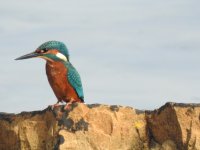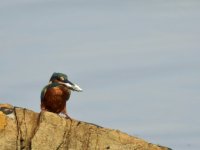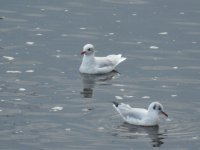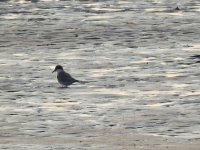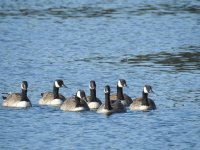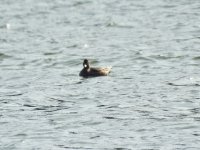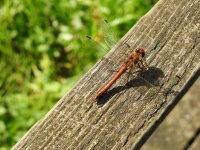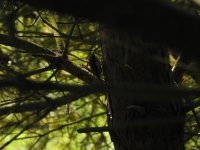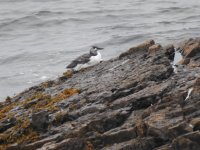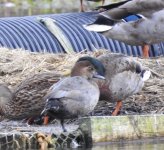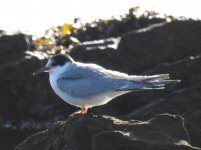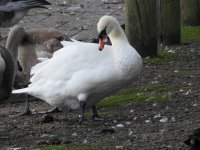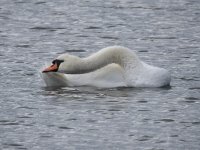With several visits to both the strip and the loch over the last five days, it is fair to say that has not been a huge amount to report. In fact, there are noticeably fewer birds than there were three weeks ago.
Along the Seafield strip on Thursday morning, I had a close encounter with a Sparrowhawk that swooped past me at the tower. It head out to sea before perching on a distant rock. As you will see from the photo, it appears to have some strange white spotting. I'm thinking it is possibly a young bird still showing a bit of down?
Also seen on Thursday was at least one Bar-Tailed Godwit. The first of my returning winter birds.
On Friday, I decided to do both the coastal strip and the loch area in one go on foot. Parking at the Seafield car park, I headed along the path for Kinghorn, before cutting inland to the loch. Having explored that area, I then headed back to Seafield, along the road, before cutting through the housing estate to the tower and finishing off by heading back along the coastal path to the car park. Four and a half hours on foot, with probably eight to nine miles covered. Typical summer fare in regards to bird, best of the day was a family of Grey Wagtails at the loch.
Yesterday, I made an afternoon call in to the loch. Heading along the loch side path towards the hide, I was diverted by the sound of hawks calling somewhere on the wooded hillside above me. I had to go off track, and endure a serious nettling, but eventually I was rewarded by the sight of a Sparrowhawk skimming the treetops. A good addition to the loch list.
This morning saw another addition to the loch list with a Common Gull found to be perched on a buoy.
51. Sparrowhawk
52. Common Gull
Along the Seafield strip on Thursday morning, I had a close encounter with a Sparrowhawk that swooped past me at the tower. It head out to sea before perching on a distant rock. As you will see from the photo, it appears to have some strange white spotting. I'm thinking it is possibly a young bird still showing a bit of down?
Also seen on Thursday was at least one Bar-Tailed Godwit. The first of my returning winter birds.
On Friday, I decided to do both the coastal strip and the loch area in one go on foot. Parking at the Seafield car park, I headed along the path for Kinghorn, before cutting inland to the loch. Having explored that area, I then headed back to Seafield, along the road, before cutting through the housing estate to the tower and finishing off by heading back along the coastal path to the car park. Four and a half hours on foot, with probably eight to nine miles covered. Typical summer fare in regards to bird, best of the day was a family of Grey Wagtails at the loch.
Yesterday, I made an afternoon call in to the loch. Heading along the loch side path towards the hide, I was diverted by the sound of hawks calling somewhere on the wooded hillside above me. I had to go off track, and endure a serious nettling, but eventually I was rewarded by the sight of a Sparrowhawk skimming the treetops. A good addition to the loch list.
This morning saw another addition to the loch list with a Common Gull found to be perched on a buoy.
51. Sparrowhawk
52. Common Gull




